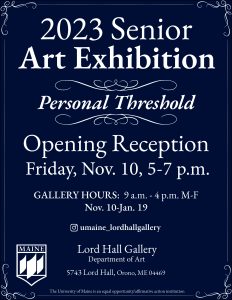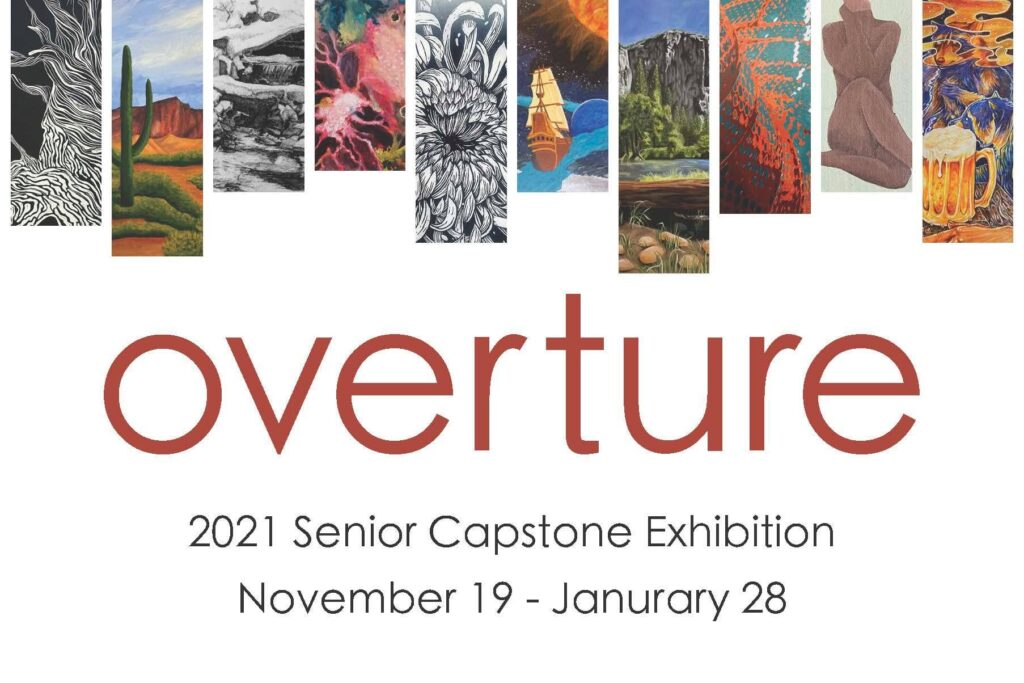Previous Exhibitions
Maine & Aomori Print Exchange: Selected Images
 Maine and Aomori Print Exchange: Selected Images was on display October 5 through November 9, 2018 in the Lord Hall Gallery at the University of Maine.
Maine and Aomori Print Exchange: Selected Images was on display October 5 through November 9, 2018 in the Lord Hall Gallery at the University of Maine.
The exhibition was a collaboration between the Lord Hall Gallery and the Maine Aomori Printmaking Society (MAPS – https://maineaomoriprintmakingsociety.com/), an international printmaking exchange between working artists in Maine and Aomori, Japan. Each year, the MAPS exchange features the work of twenty contemporary printmakers. The exchange is hosted by the Friends of Aomori, a non-profit organization located in Portland, Maine. The prints are held permanently in the collections of the Manakata Shiko Memorial Museum of Art in Aomori City and at the Friends of Aomori.
Maine and Aomori Print Exchange: Selected Images included 44 prints chosen by the curators, Laurie E. Hicks, professor of art, and Briar Pelletier, an art history alum of the University of Maine’s Department of Art. The body of work was selected from the prints collected over the past three years as part of the exchange. This exhibition marks the first time prints from the exchange are exhibited simultaneously in both Maine and Aomori City.
Two Exhibitions: devolve - Installations by Andy Mauery and blue traumas - Cyanotypes by elin o'Hara slavick
devolve – Installations by Andy Mauery
The exhibition “devolve” featured selected works by Andy Mauery, a UMaine associate professor of art. Mauery describes her work as “unheroic: quieter, contemplative, more likely to offer questions than provide answers.” Working with hair and hair-like fibers, wax and paper, Mauery’s pieces often reference the body, while others are more memoirs of nurture (or lack thereof) within the context of nature.
blue traumas – Cyanotypes by elin o’Hara slavick
 “Blue Traumas” was an exhibition of cyanotypes by elin o’Hara slavick, a professor of art at the University of North Carolina at Chapel Hill. Her images respond to and tell stories associated with the dropping of the atomic bomb on Hiroshima, Japan, in 1945. These photographic images are attempts to visually, poetically and historically address the magnitude of what disappeared as a result of this event — and to consider what remained.
“Blue Traumas” was an exhibition of cyanotypes by elin o’Hara slavick, a professor of art at the University of North Carolina at Chapel Hill. Her images respond to and tell stories associated with the dropping of the atomic bomb on Hiroshima, Japan, in 1945. These photographic images are attempts to visually, poetically and historically address the magnitude of what disappeared as a result of this event — and to consider what remained.

























